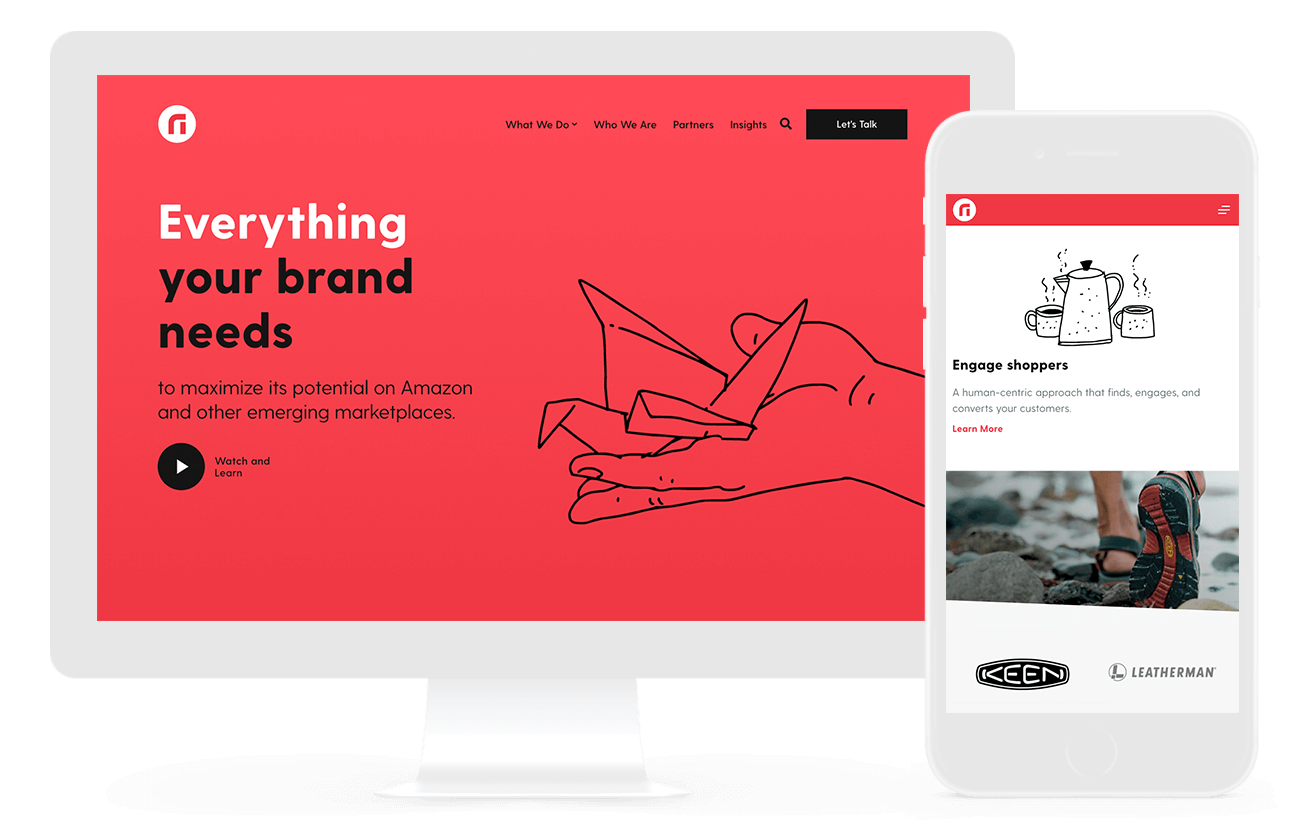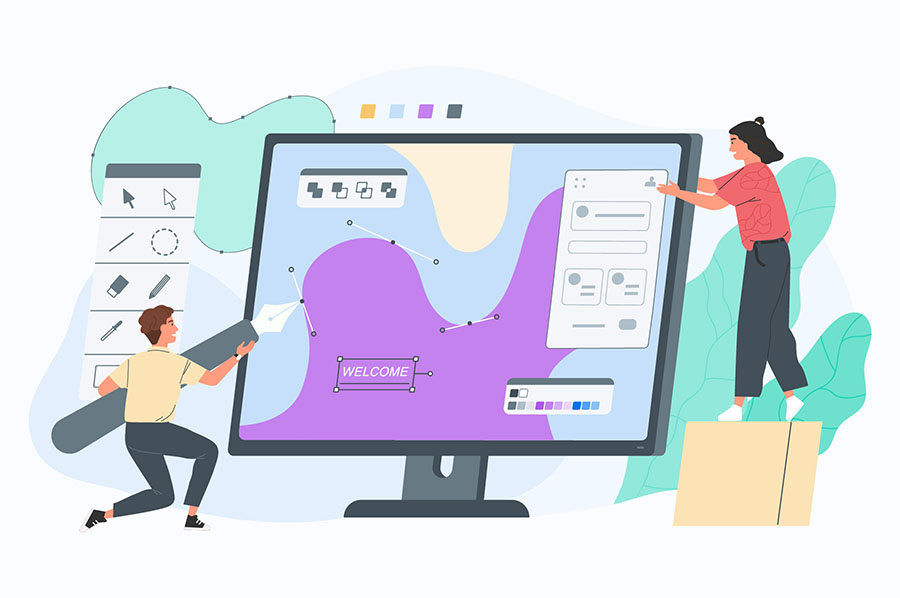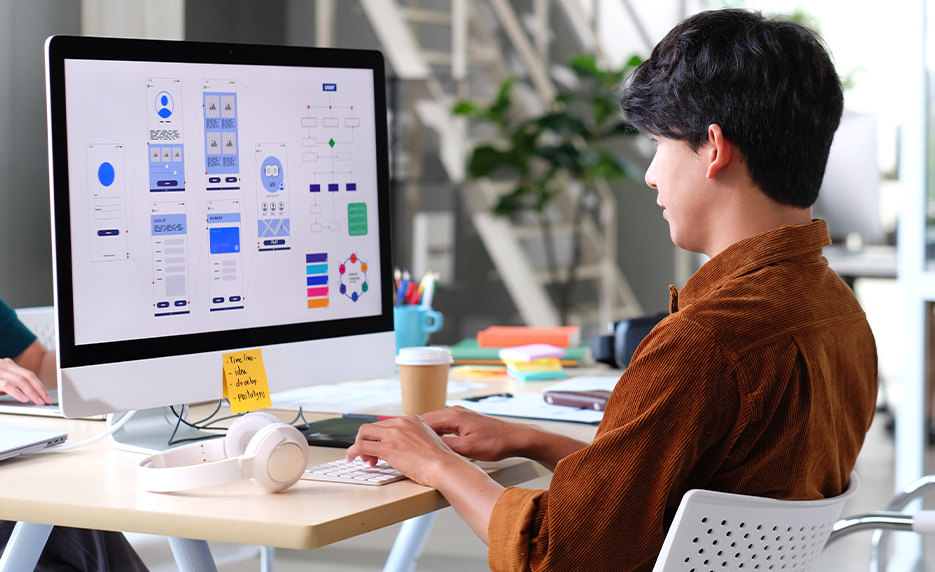All Categories
Featured
Table of Contents
- – What Is Web Design (And How Do I Get It Right)...
- – Redtree Web Design - Pittsburgh Tips and Tric...
- – Why Is Web Design Important? - 6 Reasons To I...
- – Web Design Inspiration : The Best Website Des...
- – Boxcar Studio - Wordpress & Drupal Web Design...
- – What Can I Do With A Web Design And Developme...
- – Webpage Design (Article) - Further Learning ...
- – Otc Web Design Girdwood, Alaska - Web Design...
- – What Is A Web Designer? (2022 Guide) - Brain...
- – What Is Web Design? The Ultimate Guide To We...
- – Responsive Web Design - A List Apart Tips an...
What Is Web Design (And How Do I Get It Right)? - 99designs Tips and Tricks:
Quick summary Usability and the energy, not the visual style, identify the success or failure of a site. Considering that the visitor of the page is the only individual who clicks the mouse and therefore decides whatever, user-centric design has actually established as a basic technique for successful and profit-oriented website design - web design frederick md.
and the utility, not the visual style, figure out the success or failure of a site. Given that the visitor of the page is the only person who clicks the mouse and therefore chooses whatever, user-centric style has become a basic method for successful and profit-oriented website design. After all, if users can't use a function, it may as well not exist.
g. where the search box must be put) as it has actually currently been performed in a number of articles; rather we focus on the techniques which, used properly, can cause more advanced style decisions and streamline the procedure of viewing provided information. Please notice that you might be interested in the usability-related articles we have actually published prior to: Principles Of Excellent Website Design And Reliable Website Design Guidelines, In order to use the concepts properly we first require to comprehend how users communicate with sites, how they think and what are the fundamental patterns of users' behavior.
Redtree Web Design - Pittsburgh Tips and Tricks:
Visitors glimpse at each brand-new page, scan some of the text, and click the very first link that catches their interest or vaguely looks like the thing they're trying to find. In fact, there are large parts of the page they do not even take a look at. The majority of users search for something interesting (or helpful) and clickable; as soon as some appealing prospects are found, users click.
If a page offers users with premium material, they are ready to compromise the content with ads and the design of the website. This is the reason that not-that-well-designed websites with premium material acquire a great deal of traffic over years. Material is more crucial than the design which supports it.

Users don't read, they scan. Notification how "hot" areas abrupt in the middle of sentences. This is common for the scanning process. Really basic concept: If a website isn't able to fulfill users' expectations, then designer stopped working to get his task done effectively and the company loses money. The greater is the cognitive load and the less instinctive is the navigation, the more prepared are users to leave the site and search for options.
Why Is Web Design Important? - 6 Reasons To Invest In Site ... Tips and Tricks:
Neither do they scan website in a linear fashion, going sequentially from one site section to another one. Instead users satisfice; they choose the very first affordable alternative. As quickly as they find a link that appears like it may cause the objective, there is a great possibility that it will be right away clicked.
It does not matter to us if we understand how things work, as long as we can utilize them. If your audience is going to act like you're creating signboard, then style excellent signboards." Users wish to have the ability to control their browser and rely on the consistent data presentation throughout the site.
If the navigation and site architecture aren't intuitive, the number of enigma grows and makes it harder for users to comprehend how the system works and how to receive from point A to point B. A clear structure, moderate visual ideas and easily identifiable links can assist users to discover their course to their aim.
Web Design Inspiration : The Best Website Design Ideas Tips and Tricks:

claims to be "beyond channels, beyond items, beyond circulation". What does it mean? Because users tend to check out sites according to the "F"-pattern, these 3 statements would be the very first elements users will see on the page once it is packed. Although the design itself is simple and user-friendly, to understand what the page is about the user needs to search for the response.
When you've attained this, you can interact why the system is helpful and how users can take advantage of it. Individuals won't utilize your web site if they can't find their method around it. 2. Do Not Misuse Users' Persistence, In every job when you are going to provide your visitors some service or tool, try to keep your user requirements very little.
Newbie visitors are prepared to, not filling long web types for an account they might never ever use in the future. Let users check out the site and discover your services without forcing them into sharing personal data. It's not affordable to force users to go into an email address to evaluate the feature.
Boxcar Studio - Wordpress & Drupal Web Design ... - Ann Arbor Tips and Tricks:
Stikkit is an ideal example for an user-friendly service which requires nearly nothing from the visitor which is unobtrusive and reassuring. Which's what you want your users to feel on your website. Apparently, Termite requires more. However the registration can be carried out in less than 30 seconds as the kind has horizontal orientation, the user does not even need to scroll the page.
A user registration alone is sufficient of an impediment to user navigation to cut down on incoming traffic. Handle To Focus Users' Attention, As sites offer both fixed and vibrant content, some elements of the user interface draw in attention more than others do.
Focusing users' attention to specific areas of the site with a moderate usage of visual elements can help your visitors to receive from point A to point B without thinking of how it actually is supposed to be done. The less concern marks visitors have, the they have and the more trust they can develop towards the business the website represents.
What Can I Do With A Web Design And Development Degree? Tips and Tricks:
Strive For Function Exposure, Modern web designs are generally criticized due to their technique of assisting users with aesthetically appealing 1-2-3-done-steps, big buttons with visual results etc. From the style perspective these components really aren't a bad thing.
The site has 9 primary navigation alternatives which are noticeable at the first glance. The choice of colors might be too light. is a basic concept of effective user interface design. It doesn't really matter how this is attained. What matters is that the material is well-understood and visitors feel comfortable with the way they communicate with the system.
com gets straight to the point. No adorable words, no overemphasized declarations. Instead a cost: simply what visitors are trying to find. An optimal solution for reliable writing is touse short and succinct expressions (come to the point as rapidly as possible), usage scannable layout (classify the material, use several heading levels, utilize visual elements and bulleted lists which break the flow of consistent text blocks), usage plain and unbiased language (a promotion does not require to seem like ad; provide your users some sensible and objective reason they must utilize your service or stay on your site)6.
Webpage Design (Article) - Further Learning - Khan Academy Tips and Tricks:
Users are hardly ever on a site to delight in the style; furthermore, in the majority of cases they are trying to find the info in spite of the style - web design frederick md. Pursue simplicity instead of complexity. From the visitors' viewpoint, the very best site style is a pure text, with no advertisements or further material blocks matching precisely the question visitors used or the material they have actually been trying to find.
Finch clearly provides the info about the site and offers visitors an option of choices without overcrowding them with unnecessary material. Not only does it help to for the visitors, but it makes it possible to perceive the information provided on the screen.
Complex structures are more difficult to check out, scan, evaluate and work with. If you have the choice between separating 2 design segments by a visible line or by some whitespace, it's generally much better to use the whitespace service. (Simon's Law): the better you manage to supply users with a sense of visual hierarchy, the easier your material will be to perceive.
Otc Web Design Girdwood, Alaska - Web Design & Google ... Tips and Tricks:
The very same conventions and guidelines should be used to all elements.: do the most with the least quantity of cues and visual components. 4 significant points to be considered: simplicity, clearness, distinctiveness, and emphasis. Simplicity consists of only the components that are essential for interaction. Clearness: all elements must be developed so their meaning is not unclear.
Conventions Are Our Pals, Standard design of website aspects does not result in an uninteresting web site. It would be a functionality nightmare if all websites had different visual discussion of RSS-feeds.
comprehend what they're anticipating from a site navigation, text structure, search positioning etc. A case in point from functionality sessions is to equate the page in Japanese (assuming your web users do not understand Japanese, e. g. with Babelfish) and supply your functionality testers with a task to find something in the page of different language.
What Is A Web Designer? (2022 Guide) - Brainstation® Tips and Tricks:
Steve Krug suggests that it's much better to, but benefit from conventions when you do not. 10. Test Early, Test Often, This so-called TETO-principle ought to be used to every web style job as use tests often supply into substantial issues and concerns related to a provided layout. Test not too late, not too little and not for the incorrect reasons.
Some essential points to bear in mind: according to Steve Krug, and testing one user early in the task is better than screening 50 near completion. Accoring to Boehm's very first law, errors are most regular during requirements and design activities and are the more pricey the later on they are removed.
That suggests that you design something, test it, repair it and then check it once again. There might be problems which haven't been discovered throughout the preliminary as users were almost blocked by other issues. use tests. Either you'll be indicated the problems you have or you'll be pointed to the lack of significant style flaws which is in both cases a helpful insight for your job.
What Is Web Design? The Ultimate Guide To Website Design ... Tips and Tricks:

This holds for designers. After you've worked on a website for few weeks, you can't observe it from a fresh point of view anymore. You know how it is built and therefore you understand precisely how it works you have the knowledge independent testers and visitors of your website would not have.
It can be linked to other locations such as graphic design, user experience, and multimedia arts, however is more aptly seen from a technological viewpoint. It has become a large part of individuals's daily lives. It is difficult to picture the Web without animated graphics, different designs of typography, background, videos and music.

Throughout 1991 to 1993 the World Wide Web was born. Text-only pages could be seen using a simple line-mode browser. In 1993 Marc Andreessen and Eric Bina, produced the Mosaic internet browser. At the time there were several browsers, nevertheless the majority of them were Unix-based and naturally text heavy. There had actually been no integrated approach to graphic style components such as images or noises.
Responsive Web Design - A List Apart Tips and Tricks:
The W3C was produced in October 1994 to "lead the World Wide Web to its full capacity by developing typical protocols that promote its advancement and guarantee its interoperability." This dissuaded any one company from monopolizing a propriety browser and programming language, which could have modified the effect of the Internet as a whole.
As this has actually occurred the innovation of the web has also moved on. There have likewise been substantial changes in the way individuals utilize and access the web, and this has changed how sites are created.
Learn more about Lovell Media Group LLC or TrainACETable of Contents
- – What Is Web Design (And How Do I Get It Right)...
- – Redtree Web Design - Pittsburgh Tips and Tric...
- – Why Is Web Design Important? - 6 Reasons To I...
- – Web Design Inspiration : The Best Website Des...
- – Boxcar Studio - Wordpress & Drupal Web Design...
- – What Can I Do With A Web Design And Developme...
- – Webpage Design (Article) - Further Learning ...
- – Otc Web Design Girdwood, Alaska - Web Design...
- – What Is A Web Designer? (2022 Guide) - Brain...
- – What Is Web Design? The Ultimate Guide To We...
- – Responsive Web Design - A List Apart Tips an...
Latest Posts
Web Design Online Course:
Web Design Certificate - Web Development Certificate Program Tips and Tricks:
$899 - Custom Mobile Friendly Website Design By Go Web ... Tips and Tricks:
More
Latest Posts
Web Design Online Course:
Web Design Certificate - Web Development Certificate Program Tips and Tricks:
$899 - Custom Mobile Friendly Website Design By Go Web ... Tips and Tricks: